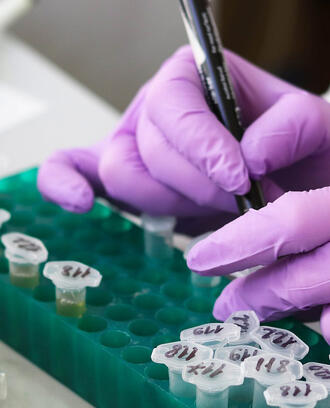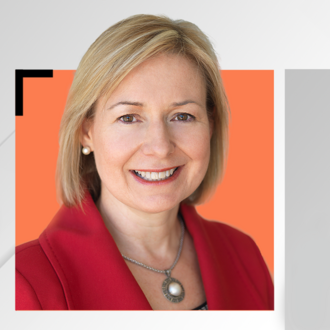Imagine diagnosing a disease before symptoms begin. Or diagnosing cancer without a biopsy. Or better understanding pathogens, bacteria, and viruses like COVID-19 as they mutate. The proteins in our blood (the proteome) could be the key to making these things possible.
It is no secret that the proteome holds valuable information, but the challenge lies in unlocking it. We can check a few proteins easily, like a PSA screening for prostate cancer. But we have to know exactly which proteins we are looking for. Screening an entire proteome takes weeks on a single sample. That is not practical when patients are waiting for results and quick treatment could save lives.
If we could speed up the time it takes to interrogate the entire proteome – and do so in a cost-effective way -- it could be transformative. Putting together an interdisciplinary team of researchers from the MIT Sloan School of Management, the Koch Institute, Harvard Medical School, Seer, and several other organizations, we decided to try to find a way to do just that.
Our team was comprised of experts in nanotechnology, proteomics, and data science. Using foundational technology originating in part from Dr. Omid Farokhzad’s lab at Harvard Medical School, we developed a technique to interrogate thousands of proteins – most of the proteome. By identifying proteins that stuck to the surface of nanoparticles in plasma, we could see a patient’s proteome in a few hours.
This technique produced something like a hazy photograph. But we needed a clear picture of the proteome for it to be beneficial. So, we used data science to clarify the photo. Through a number of machine learning approaches -- some known and others we developed ourselves, including a specific approach related to “tensor completion” -- we were able to “denoise” the photograph.
With the picture clear, we could apply older and simple methods to diagnose and predict diseases.
For example, we detected things like non-small-cell lung cancer in its earliest stages with extremely high accuracy. (We had an AUC of 91%.) The alternative for those patients would be a biopsy of lung tissue, which is an invasive surgery. Our approach only required a blood draw, making it substantially easier and cheaper.
This technology could also be applied to better understand viruses like COVID-19. Current research on the virus is based on its genetics, but we can use this technology to see the physical changes to the protein and study the implications of those mutations. We also can use this technology to better understand why some patients succumb to the virus while others are only mildly affected. By studying the proteomic signatures of people with the virus, we can better guide diagnostics and therapeutics.
The ability to unlock the proteome could be as groundbreaking as the ability to sequence our DNA. Today, the human genome is sequenced about every 30 seconds. Scientists have identified approximately 500 million genetic variations, but they have only linked 30,000 to a function or relevance from a disease perspective. The rest is still a mystery.
If we can look at proteomic information in an unbiased way, similar to genetic sequencing, we could identify potentially hundreds of thousands of protein variances across the population over time. When you put that information together with genomic information, our knowledge will grow exponentially.
Combining expertise across fields is critical, which is why we are partnering with experts who led the original genomics revolution. It will take a team to bring proteomic information to a similar scale of access as genomic information is today. We are also hoping to increase access to patients’ proteomes by commercializing the technology through Dr. Farokhzad’s biotech company Seer.
So far, we are at the tip of the iceberg in terms of unlocking proteomics, but its potential is huge. This could fundamentally change the way we address healthcare.
Vivek Farias is the Patrick J. McGovern (1959) Professor and a Professor of Operations Management at the MIT Sloan School of Management. Robert Langer is the David H. Koch Institute Professor at MIT and head of the MIT Langer Lab. Omid Farokhzad is a professor at Harvard Medical School, a physician-scientist at Brigham and Women’s Hospital, and a serial entrepreneur. He holds an MBA from MIT Sloan and is founder and CEO of Seer. They are coauthors of “Rapid, deep and precise profiling of the plasma proteome with multi-nanoparticle protein corona,” which was published July 15 in Nature Communications.



